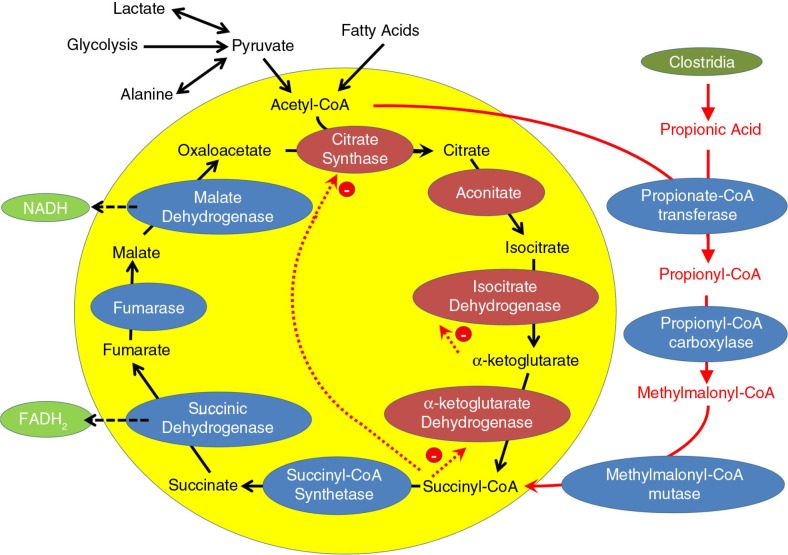Fig. 2.
The tricarboxylic acid cycle during high levels of propionic acid. Propionic acid, presumably derived from Clostridia spp., is metabolized to propionyl-CoA using acetyl-CoA. Propionyl-CoA is further metabolized into methylmalonyl-CoA, which enters the tricarboxylic acid cycle as succinyl-CoA. Succinyl-CoA inhibits the first and fourth enzyme in the tricarboxylic acid cycle. In this manner, propionic acid may ‘short circuit’ the tricarboxylic acid cycle, thereby reducing the production of nicotinamide adenine dinucleotide (NADH). This decrease in NADH is hypothesized to cause the decrease in complex I activity measured in the patients with consistent elevations in short and long acyl-carnitines (CESLAC).

